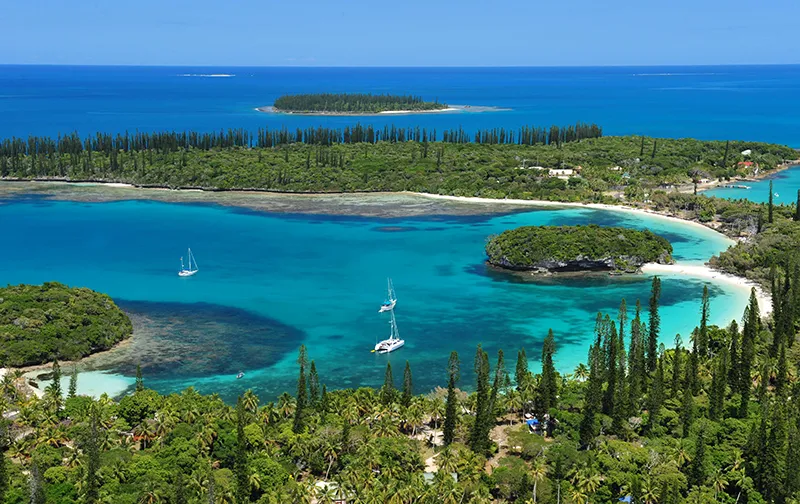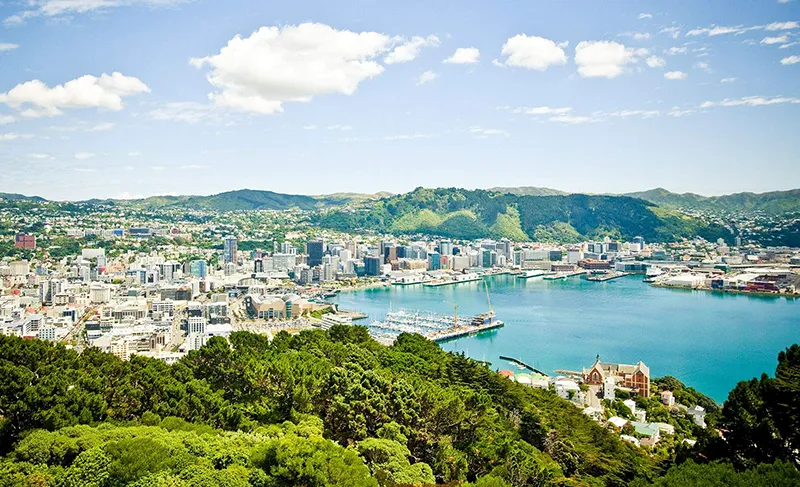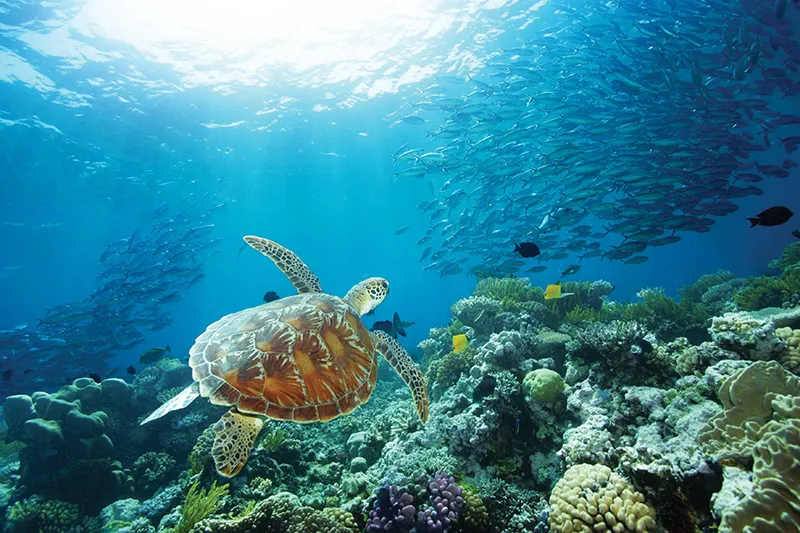New Caledonia is a French overseas territory located in the South Pacific. It is located on the east coast of the Australian continent, north of New Zealand and south of Equatorial Guinea. New Caledonia is an archipelago consisting of the main island of Grande Terre, about 20 smaller islands and many coral reefs.
New Caledonia has a rich cultural and natural history. It was home to many Melanesian tribes, and today many locals continue to preserve their traditions and customs. New Caledonia is also known for its beautiful white beaches, crystal clear waters, barrier reefs and many other natural attractions.
New Caledonia has some autonomy, but is still under the jurisdiction of the French government and abides by French laws. It also enjoys special rights and privileges, including French national citizenship and access to its social and economic systems.
France’s overseas territories are of important geopolitical and economic importance to France as well as to the world. They are places with unique cultures and natural riches that attract many tourists and are important sources of resources such as nickel, oil, fish and other products. New Caledonia has a high standard of living and has a strong influence on neighboring countries and territories.
History
People settled here about 3,500 years ago, when New Caledonia was settled by people of the Lapita culture, the ancestor of the Polynesian, Micronesian and Melanesian cultures. Lapita culture itself came here from Southeast Asia, presumably from Taiwan.
Ancient inhabitants of New Caledonia reared grain trees, domesticated pigs, chickens, and dogs, which they bred for food. The burials of the Lapita people found were highly unusual: all the skeletons were decapitated and the skulls were replaced by cone-shaped shells.
The inhabitants of New Caledonia are Melanesian in language and custom, and are called Kanak. The current population of New Caledonians represents 45 per cent of the population.
Before the arrival of Europeans, New Caledonia did not have a single state. The Kanak tribes spoke their own languages and 25 different Kanak languages have survived to this day.
New Caledonia was discovered by the British navigator James Cook in 1774 and named after his historic homeland: Caledonia – the ancient name of Scotland. In the mid-19th century, sandalwood merchants and English and French missionaries ruled the place. France declared the islands its possession in 1853.
The French banished convicts here until the late 19th century, when they began mining rich mineral deposits: nickel, cobalt, chrome, iron, manganese, gold, and lead. In 1946, New Caledonia received the status of an overseas territory of France, which almost equalized its citizens with the French.
In 2008, New Caledonia’s barrier reef lagoons were added to the list of UNESCO World Heritage Sites.
Nature
Much of New Caledonia is covered with uplands, and the coasts are very rugged. There are many convenient bays, although access to them is somewhat difficult because of the coral reefs.
The reefs near the mouths of numerous small rivers suffer from the sediment created by mining and agricultural activities, as well as the destruction of the mangroves that used to act as river filters.
Soil erosion caused by human activity is a common phenomenon in New Caledonia. There is less and less available land for cultivation and the population is dependent on food imports. They are helped by tourism, financial subsidies from France and constantly rising nickel prices: New Caledonia is home to 25% of the world’s nickel ore reserves.
New Caledonia is one of the biggest islands in the Pacific Ocean which broke away from Australia 65 million years ago and took its present position 50 million years ago. Because New Caledonia and neighboring islands were isolated from the rest of the world for a long time, a unique ecosystem was formed here with endemic flora and fauna.
The endangered dugong lives here, and the green turtle lays its eggs. The cagu bird is the only representative of its species endemic to New Caledonia, as is the amborella plant, also found nowhere else, and the flying foxes, a genus of megawings of the winged family.
The soil here is rather toxic due to the presence of many metals, which has played a surprisingly positive role in the survival of local flora, which over the years has adapted to this unpleasant factor.
In New Caledonia, European culture has almost completely displaced the Kanak, and the capital Noumea is a typical average European city. It is true that the tradition of building New Caledonian huts, round or rectangular in shape, with a roof of palm leaves, is still preserved in the villages.
General Information
- Origin: Tectonic and coral. Archipelago consists of the island of New Caledonia, the Loyalty Archipelago, and uninhabited islands.
- Status: Sui generis collectivity.
- Location: South Pacific, east of Australia.
- Borders: Australia on the southwest, Vanuatu on the north, Fiji on the southeast.
- Administrative center: Nouméa (New Caledonia, 144,000 residents (2009)).
- Administrative divisions: three provinces.
- Languages: French (official), and 33 Melanesian and Polynesian dialects.
- Ethnic composition: Melanesians – 44.1%, whites – 34.1%, Uwanians and Futunans – 9%, Polynesians – 3.7%, Indonesians – 2.5%, Vietnamese – 1.4%, others – 5.2% (1996).
- Religions: Catholicism, Protestantism, Islam, Kanak beliefs.
- Currency: French Pacific franc.
- Major population centers: Noumea, Cone.
- The largest river: Diakhot.
- The most important port: Nouméa.
- Area (total): 18,576 km2.
- Length: 350 km.
- Width: 50-70 km.
- Population: 256,275 (2011).
- Population density: 13.8 persons/km2.
- Length of the coastline: 2254 km.
- Highest point: Panier mountain (New Caledonia), 1628 m.
Economy
- Minerals: nickel (25% of world reserves), chrome, iron ore, cobalt, manganese, silver, gold, lead and copper.
- Industry: nickel mining and processing, non-ferrous metallurgy.
- Agriculture: coffee, coconut, yams, taro, yams, cassava, cattle.
- Fishing.
- Tourism.
- Financial subsidies from France.
Climate and weather
- Tropical trade winds, hot and humid.
- Average annual temperature: +23 – +24,5 ºС.
- Average annual rainfall: from 3000 mm in the eastern part of the archipelago to 700 mm in the west.
- Cyclones from November to March.
- Seismic zone.
Attractions
- New Caledonia: the Forbidden Caves of Fathanaue, Pierced Rock, Madeleine and Ouadiana Falls.
- City of Nouméa, New Caledonia: Maritime History Museum, St. Joseph’s Cathedral.
- City of Jengen: The Black Cliffs of Leanderlik, Mount Mont Pany.
- City of La Foa: Fort Teremba.
- City of Buray: the rock massif of La Roche.
- Ile de Pin Island: the caves of Grotte d’Ouachia and Grotte de Ouimbni.
- Isle of Mare: Lape Roosa Well, Natural Aquarium.
- Island of Uvea: rock bridge.
Fun Facts
- The voice of the New Caledonian Kagu bird – barking at dawn and quietly hissing or rattling the rest of the day.
- Grand Ter is the name of the main island of any archipelago. This is the French name for the island of New Caledonia, the largest island of the Kerguelen archipelago, and others.




